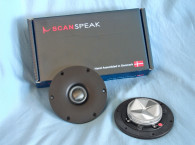
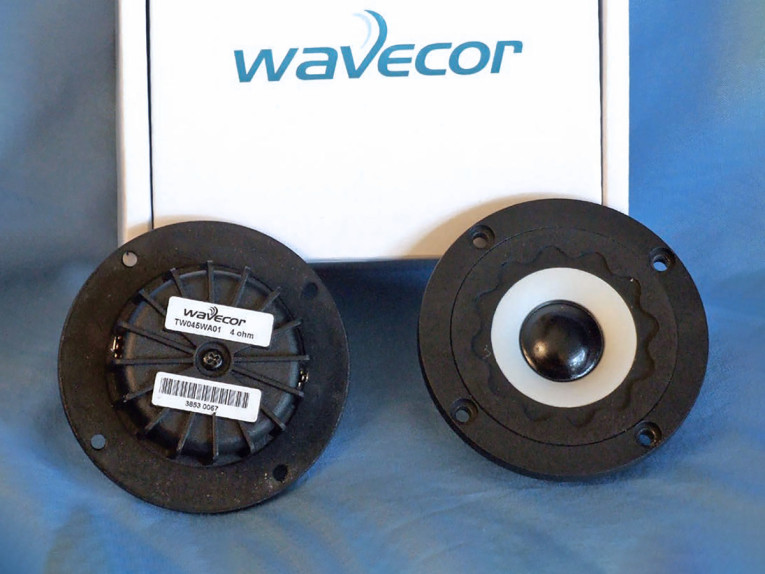
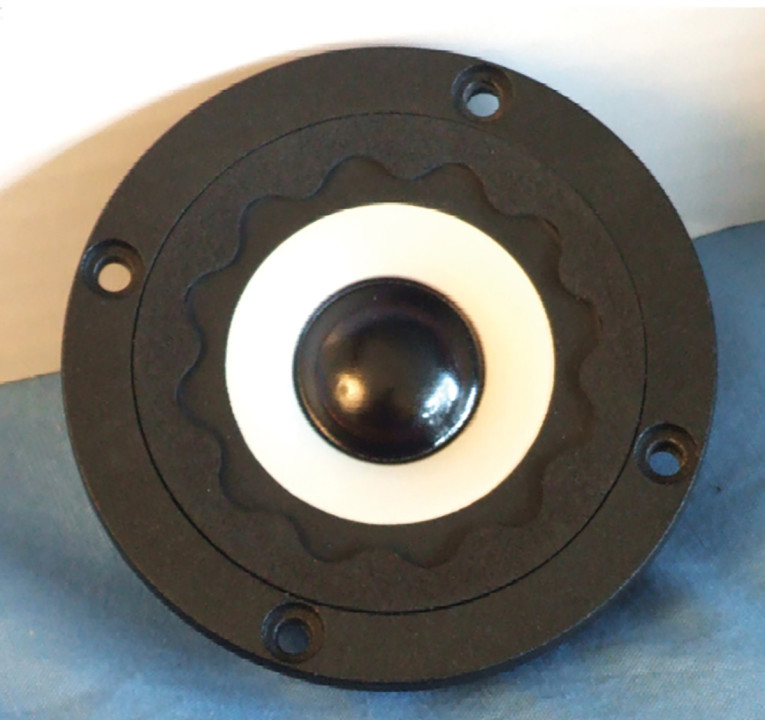
Other features include a dual neodymium magnet motor structure, a copper foil-clad pole shorting ring (Faraday shield) vented to an aluminum die cast damped rear chamber (with rear heatsink fins), a compact injection-molded 90mm (3.5”) diameter 6.7mm thick aluminum faceplate, a 4Ω 22mm diameter voice coil with a vented aluminum former wound with copper-clad aluminum wire (CCAW), a foam mounting gasket, 95dB sensitivity (averaged 5kHz-20kHz) and gold-plated terminals. A sculpted foam damping ring is attached to the faceplate, along with an acoustic damping pad attached to the top of the pole piece, directly below the coated textile dome. It should also be noted that the thick black emissive coated aluminum faceplate and aluminum rear finned cavity provide substantial thermal cooling for this tweeter.
Testing commenced using the LinearX LMS analyzer to produce the 300-point impedance sweep illustrated in Figure 1. The tweeter resonance occurs at a moderately low 670Hz. With a 2.87Ω DCR (Re), the minimum impedance for this tweeter is 3.2Ω at 1.8 kHz.
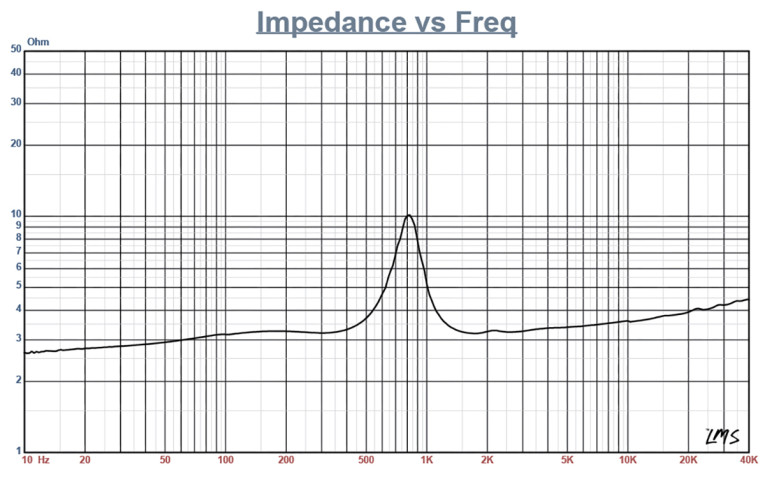
Following the impedance test, I recess mounted the Wavecor tweeter in an enclosure with a baffle area of 12”×5” and measured the on- and off-axis frequency response again using the Loudsoft FINE R+D analyzer (provided to Voice Coil by Loudsoft) and the GRAS 46BE ¼” microphone (courtesy of GRAS Sound & Vibration), which were set up to measure from 200Hz to 40kHz (using a 192kHz sampling rate) at 2V/0.5m normalized to 2.83V/1m. Sweeps were performed at 0°, 15°, 30° and 45°. Figure 2 shows the on-axis response of the TW045WA01, which measured ±2.0dB from 750Hz to 20.5kHz, with the response extending to 40kHz.

Figure 3 gives the 0° to 45° on- and off-axis response of the Wavecor tweeter, with the off-axis curves normalized to the on-axis response shown in Figure 4. Figure 5 shows the CLIO 180° polar plot (measured in 10° increments with 1/3-octave smoothing). The two-sample SPL comparison of the Wavecor TW045WA01 is illustrated in Figure 6, indicating the two samples were closely matched to within ≤ 1dB throughout its operating range to 40kHz.
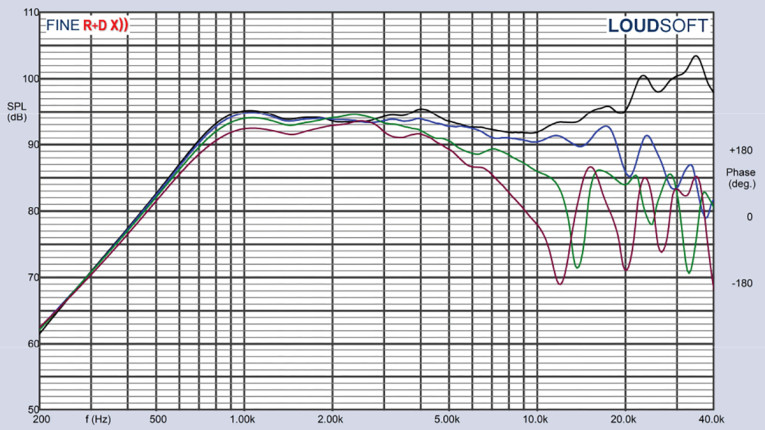


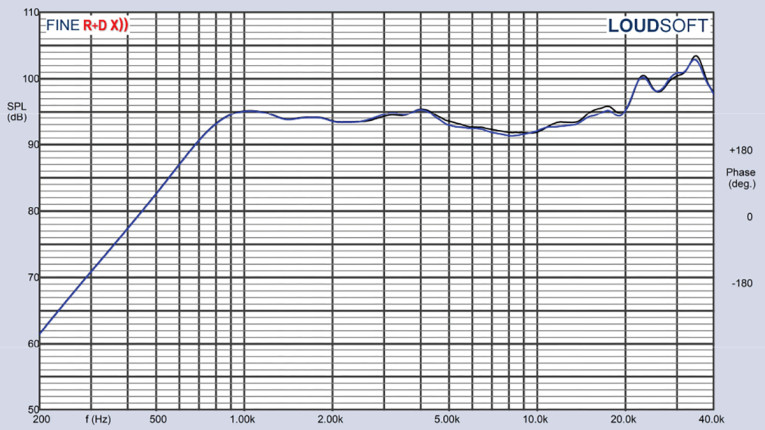
For the final test group of tests, I initialized Listen’s SoundCheck analyzer along with the Listen SCM 2 ¼” microphone (provided courtesy of Listen, Inc.) and measured the impulse response with the tweeter recess mounted on the same 12” × 5” test baffle. Importing this data into the Listen SoundMap software produced the cumulative spectral decay (CSD) waterfall plot shown in Figure 7, and the Short Time Fourier Transform (STFT) displayed as a surface plot, which is shown in Figure 8.
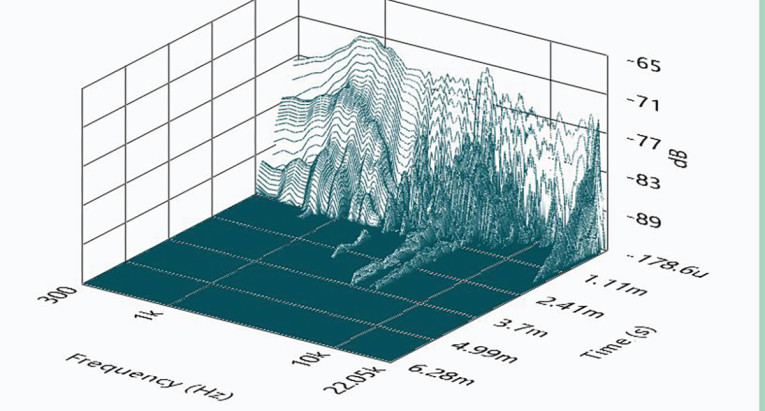
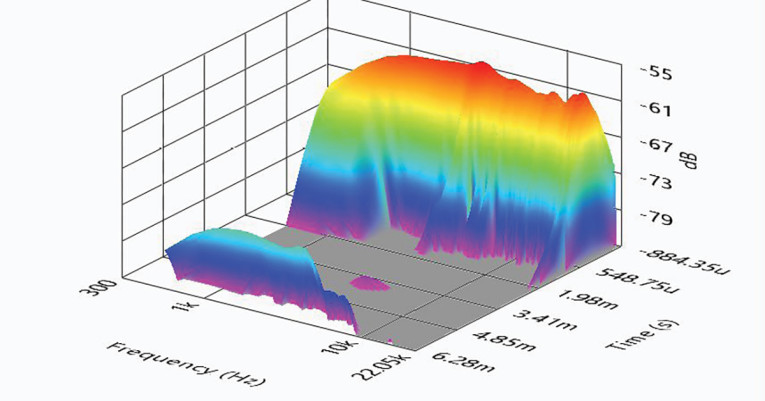
For the last SoundCheck test procedure, I set the 1m SPL to 94dB (2.96V) using a noise stimulus, and measured the second and third harmonic distortion at 10cm, depicted in Figure 9. The third harmonic distortion is very low for this driver.
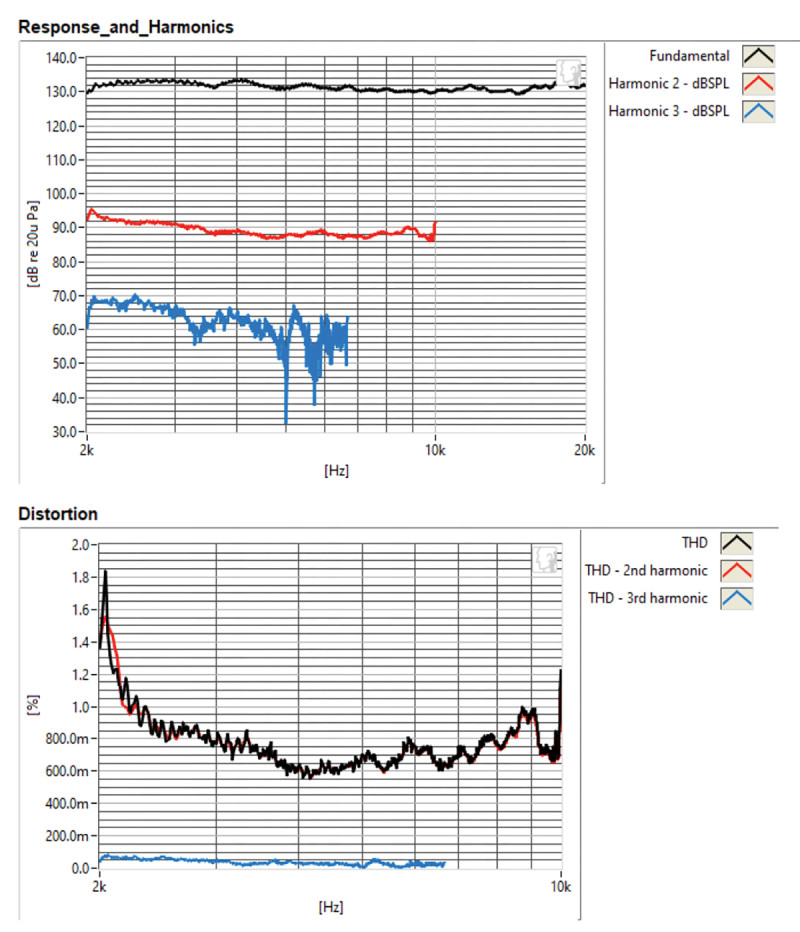
Wavecor’s build quality is typical of the high-end two-channel/home theater OEM driver market, and has remained consistently so for several years. The TW045WA01 is decidedly a new original tweeter design, and they don’t come along all that often. While I can’t discuss the details, I did have the opportunity to subjectively review an earlier proprietary OEM version of this device. The OEM high-frequency device that I had available to me was not at all identical to the TW045WA01, although it did have a very similar diaphragm and motor structure. I did an informal subjective comparison of the proprietary version with several high-end tweeters ranging in retail price of $480 to $750 each, and I found the Wavecor OEM variation squarely in that category of tweeter. That means the new Wavecor tweeter is the kind of tweeter you would find incorporated into two-channel high-end loudspeakers in the $20,000 to $100,000/pair price range. While I have not performed the same kind of subjective listening test on the new TW045WA01 tweeter, I’m guessing it falls into this same category. For more information, visit www.wavecor.com. VC
This article was originally published in Voice Coil, April 2023.




